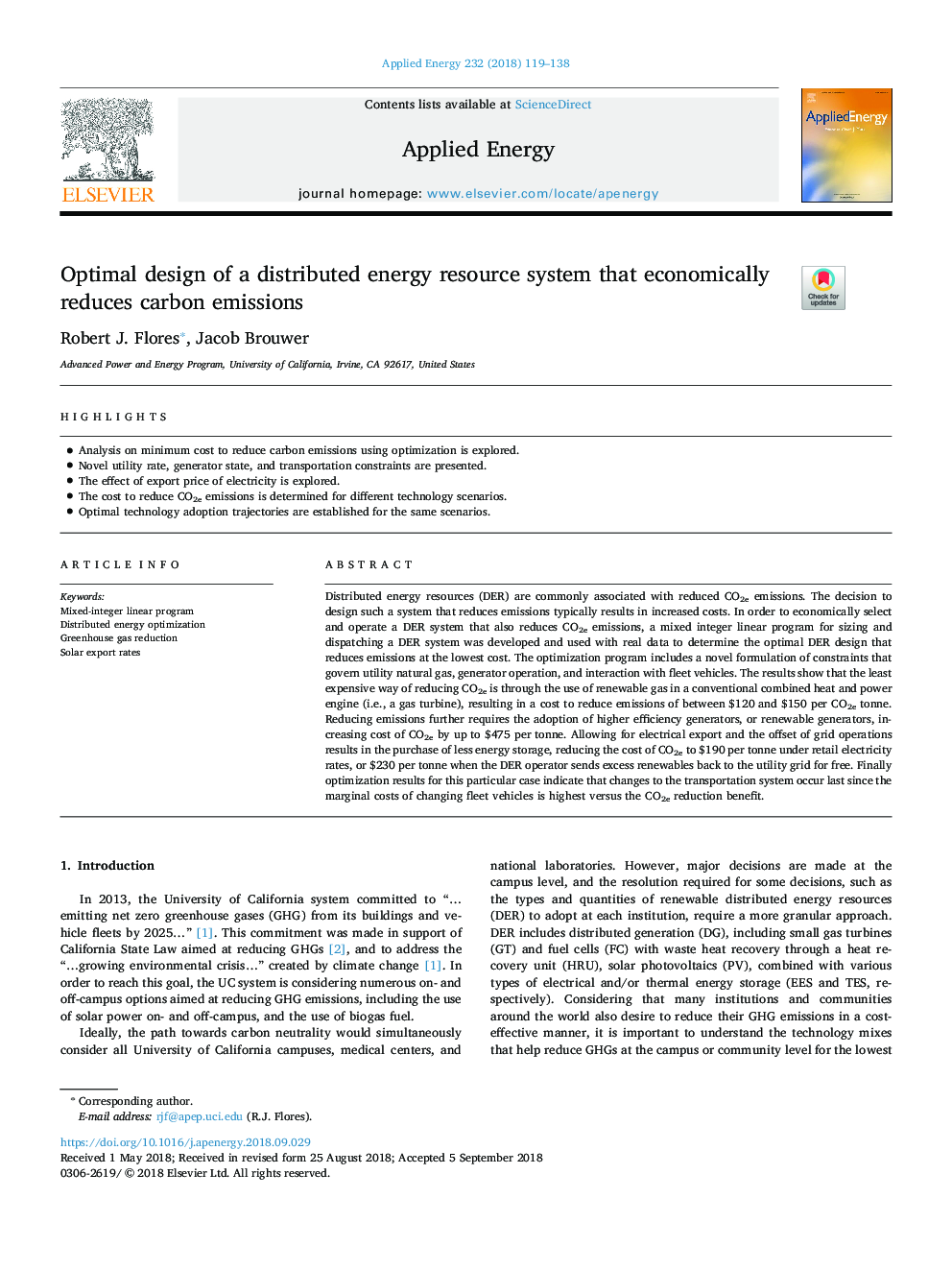| Article ID | Journal | Published Year | Pages | File Type |
|---|---|---|---|---|
| 11017584 | Applied Energy | 2018 | 20 Pages |
Abstract
Distributed energy resources (DER) are commonly associated with reduced CO2e emissions. The decision to design such a system that reduces emissions typically results in increased costs. In order to economically select and operate a DER system that also reduces CO2e emissions, a mixed integer linear program for sizing and dispatching a DER system was developed and used with real data to determine the optimal DER design that reduces emissions at the lowest cost. The optimization program includes a novel formulation of constraints that govern utility natural gas, generator operation, and interaction with fleet vehicles. The results show that the least expensive way of reducing CO2e is through the use of renewable gas in a conventional combined heat and power engine (i.e., a gas turbine), resulting in a cost to reduce emissions of between $120 and $150 per CO2e tonne. Reducing emissions further requires the adoption of higher efficiency generators, or renewable generators, increasing cost of CO2e by up to $475 per tonne. Allowing for electrical export and the offset of grid operations results in the purchase of less energy storage, reducing the cost of CO2e to $190 per tonne under retail electricity rates, or $230 per tonne when the DER operator sends excess renewables back to the utility grid for free. Finally optimization results for this particular case indicate that changes to the transportation system occur last since the marginal costs of changing fleet vehicles is highest versus the CO2e reduction benefit.
Related Topics
Physical Sciences and Engineering
Energy
Energy Engineering and Power Technology
Authors
Robert J. Flores, Jacob Brouwer,
